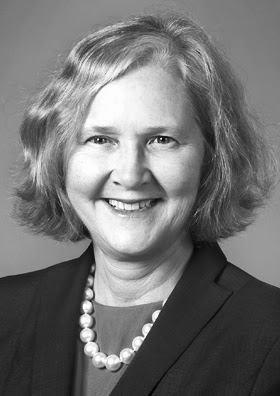 |
| Image Source: NobelPrize.org |
Topics: Biology, Genetics, Nobel Prize, Research, STEM, Women in Science
The Nobel Prize in Physiology or Medicine 2009
Elizabeth H. Blackburn, Carol W. Greider and Jack W. Szostak "for the discovery of how chromosomes are protected by telomeres and the enzyme telomerase".
This year's Nobel Prize in Physiology or Medicine is awarded to three scientists who have solved a major problem in biology: how the chromosomes can be copied in a complete way during cell divisions and how they are protected against degradation. The Nobel Laureates have shown that the solution is to be found in the ends of the chromosomes – the telomeres – and in an enzyme that forms them – telomerase.
The long, thread-like DNA molecules that carry our genes are packed into chromosomes, the telomeres being the caps on their ends. Elizabeth Blackburn and Jack Szostak discovered that a unique DNA sequence in the telomeres protects the chromosomes from degradation. Carol Greider and Elizabeth Blackburn identified telomerase, the enzyme that makes telomere DNA. These discoveries explained how the ends of the chromosomes are protected by the telomeres and that they are built by telomerase.
If the telomeres are shortened, cells age. Conversely, if telomerase activity is high, telomere length is maintained, and cellular senescence is delayed. This is the case in cancer cells, which can be considered to have eternal life. Certain inherited diseases, in contrast, are characterized by a defective telomerase, resulting in damaged cells. The award of the Nobel Prize recognizes the discovery of a fundamental mechanism in the cell, a discovery that has stimulated the development of new therapeutic strategies.
"The Nobel Prize in Physiology or Medicine 2009". Nobelprize.org. Nobel Media AB 2014. Web. 7 Mar 2015. http://www.nobelprize.org/nobel_prizes/medicine/laureates/2009/
National Institute of Health:
Discrimination, racial bias, and telomere length in African-American men.
Chae DH1, Nuru-Jeter AM2, Adler NE3, Brody GH4, Lin J5, Blackburn EH5, Epel ES3.
Comments